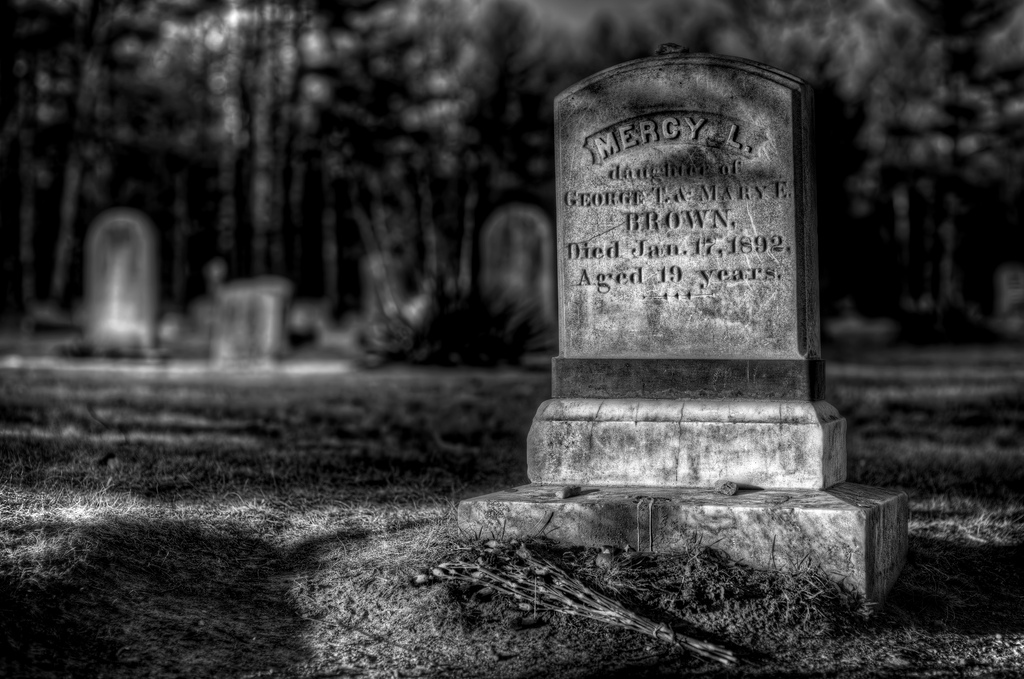The Story
It all started with a newspaper article … from the Brooklyn Daily Eagle. (Yes, the Brooklyn in New York). Dated November 4 (1889), the article states that Deputy United States Marshall Williams of Cincinnati removed a man named James Brown from the Ohio Penitentiary. Brown was described as a deranged man being transferred to the National Asylum in Washington D.C. after being incarcerated in various facilities for the past twenty-five years. In 1867, Brown was aboard a fishing boat setting out of Boston when two sailors went missing. When the bodies were found, Brown was said to have been drinking the blood of one of his victims. He was instantly returned to Boston where he stood trial, was found guilty, and sentenced to death. Then president Andrew Johnson commuted his sentence to Life Imprisonment. He remained in a Boston prison until he was sent to the Ohio Penitentiary outside Columbus, where he stayed for only a few years before transferring out.
Most of the stories trying to make the claim that James Brown was America’s First Vampire seem to be based, almost entirely, on that article. The problem with that is that there were a few details that the three-paragraph piece got wrong. Then, once the stories about the vampire started to spread, they may have borrowed elements from other stories, but by the time anyone figured any of this out, the stories already had a life of their own. (The only thing that surprises me is that nobody seems to have claimed that this vampire also recorded songs like “Papa’s Got a Brand-New Bag”, “I Got You (I Feel Good)” and “It’s a Man’s Man’s Man’s World”.)
The Truth (We Think)
The events described took place not in 1867, but 1866. The ship in question, The Atlantic, set sail not from Boston, but was in The Indian Ocean when the events transpired. It’s hard to know exactly what happened, though, as the witness accounts varied somewhat in the official reports (mainly the Grand Jury report filed September 11, 1866.)
We don’t know why, exactly, but the incident apparently started by one of Brown’s shipmates, a man named James M. Foster, called him a “Damned” … I can’t say the word. It begins with the letter N.
The two had been borderline hostile towards each other since the whaling vessel set sail and this last racist insult was all Brown could bear. He grabbed a two-sided knife and stabbed Foster in the gut with it. Witnesses said that Foster stayed alive for five or six minutes before dying. Before the ship’s captain, Benjamin Franklin Wing, could respond, Brown threw the knife over the side of the boat.
Brown would shortly be transferred to another ship, heading for Boston. There, he was tried and convicted of murder. His sentence – death.
It is unclear why President Andrew Johnson acted, but we know he did. He commuted the death penalty and instead, Brown would serve a life sentence. All we know for sure is Johnson believed extenuating circumstances might have been involved in the murder.
We also know that at various times, Brown complained about his trial, and that some of his grievances might have been justified. He claimed that he was barred from relying on certain facts during his trial. According to him, the ship’s steward had forced him to cut the rations of two sailors, although no reason was given for this. The two seamen blamed him, personally, for this and one night assaulted him. The knife attack was, Brown claimed, retaliation for this assault.
Brown would spend the first twenty-two years behind bars in Boston before being transferred to The Ohio Penitentiary, where he would stay for three and a half years. The reason for this transfer appears to be overcrowding in the Boston penal system.
Before we go on, we need to remember at that time, the prison system was a bit different than it is today. It was, by any account, more focused on punishment than rehabilitation. The living conditions were, at best, awful, and at worst, truly deplorable. Inmates were often treated inhumanely. Inside and outside the walls, the sentiment was that prison was supposed to be bad so people would not want to commit crimes they could be locked away for.
Brown’s early incarceration was marred by at least one major event. In 1871, Brown assaulted another inmate, although the details of this aren’t entirely known. What is known is that this assault was listed as the reason why, two years later, Brown was put into solitary confinement, where he would stay for the next sixteen years. Today, we know about the psychological effects (dare I say the word “torture”) this would have on any prisoner, but at that time, it was seen as a viable option.
The effect that this long-term solitary confinement had on Brown could easily be a big part of the reason behind his transfer to The Ohio Penitentiary, at least in retrospect. His stay in Ohio was relatively short, though – a mere three and a half years, by which time his mental state must have deteriorated as he was next sent to St. Elizabeth’s asylum in Washington D.C.
It was there that he lived out the remainder of his life.
Wait! I Thought We Were Talking About Vampires?
From all I have seen about this, there really is no evidence linking James Brown to vampirism.
When we think of vampires today, we see the influence of any number of great writers, including Bram Stoker (Dracula) or more recently, Anne Rice (The series that began with Interview With A Vampire). They have been the subject of popular television shows, such as Buffy the Vampire Slayer (which a former roommate informed me was based on a movie called Buffy the Spandex Wearer), True Blood, The Vampire Diaries, just to name a few.
But, the vampire stories of the 1800’s were quite a bit less on the romantic side, at least until Bram Stoker penned Dracula in 1897. Instead, at that time, vampires were horrific creatures, inhuman, although they may have once been. They were clearly monsters.
During this time, vampires were also taking the blame for what we now know belongs under health and medicine. Any disease that caused the skin to go pale, or for the lips to become redder than normal … well, something had to be doing that. And, since they had no idea what tuberculosis was or what caused it, they had to look for an explanation based on what they knew – it’s gotta be vampires.
A lot of the modern tellers of this story really want to bridge that gap between murderer and vampire somehow. Some stories claim that at some point, Brown had developed a taste for uncooked meat. Other stories try to claim that Brown sucked the blood of his victim while on that ship. Other stories have gotten a bit more … creative. However, none of these details were present in the original reports, nor the newspaper accounts, when they clearly should have been.
According to some authors and researchers, the link might stem from a bit of confusion. Or, maybe something akin to guilt by (name) association. They think it might have something to do with the story of Mercy Brown.
The Tale of Mercy Brown
One of the true historical tales that involve some brand of vampirism is that of what happened to Mercy Brown.
In 1884, the family of Geroge and Mary Brown were typical by Exeter, Rhode Island standards. But, that year, the mother, Mary Eliza Brown, and one of the daughters, Mary Olive Brown died of tuberculosis, or “consumption” as it was called at the time. We now know that this is caused by a bacteria (Mycobacterium tuberculosis) infection in the lungs, but back then they had no clue.
What they did know is that Mary Eliza first got sick, went very pale, and then her daughter did the same. It’s likely they believed that the sick mother was draining the life from her daughter, somehow, since that’s what people said in those days.
In 1891, George’s daughter Mercy got this illness too, and before long was dead herself. The following spring, George’s son, Edwin, also started to show the same signs as illness took him over. By now, the village gossip was beginning to say that the Brown family had been cursed. Maybe, someone in the family had been a vampire. If that were true, superstition stated there was a remedy – but first they had to know who the vampire was.
On March 17, 1892, the bodies of the two Marys and Mercy were exhumed. The two Mary’s bodies showed what was believed to have been the proper amount of decomposition, however the body of Mary appeared to be quite fresh. In fact, there was still some blood in her heart. This was all the proof they needed that Mercy Brown was, in fact, the vampire sucking the life out of her family.
Just like the people of the late 1800s didn’t know much about health and medicine, they also didn’t know much about other sciences, either. Considering Mercy’s burial had been in late autumn, and that the ground had remained frozen all throughout the winter months, it really shouldn’t have been all that much of a shock that Mercy’s body hadn’t decomposed all that much. But, since they didn’t know – they called the girl a vampire.
George removed Mercy’s heart and liver and had them burned. He then added the ashes to a bit of water to make a tonic. Superstitions at the time said that anyone who drank this tonic would become immune to the vampire’s curse … and without her heart and liver, Mary could no longer influence any further members of the family. George fed the tonic to Edwin, but his son would pass away a couple months later. (George, though, never contracted the disease.)
Both the stories of James Brown and Mercy Brown were well known at the time, being reported in the newspapers, and talked about around whatever passed for the water cooler those days. This was especially true for the Mercy Brown story, as she is believed to be the inspiration for several characters, most notably Lucy Westenra in Bram Stoker’s novel Dracula.
Clearly, there is no way to prove anyone equated James Brown with Mercy Brown, let alone confused the two. Maybe it is just a coincidence that both stories, featuring people with the same last name, were circulating at the same time. Or, maybe people just wanted a good vampire story and twisted the stories to fit their needs.
How it happened … we might never know.
Dig Deeper
- Ohio Penitentiary – Wikipedia
- Mercy Brown vampire incident – Wikipedia
- Ohio Penitentiary – Ohio History Central
- All The President’s Vampires – Toothpickings
- The President’s Vampire: Strange-but-True Tales of the United States of America by Robert Damon Schneck
- Inside The Ohio Penitentiary by David Myers



